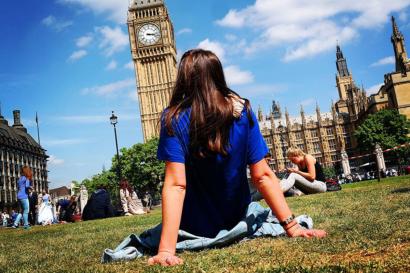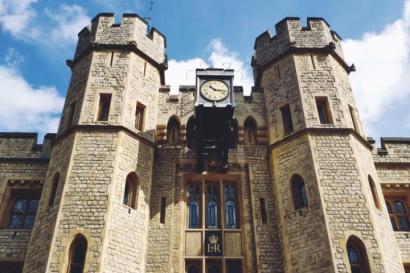Books to read while studying abroad in Oxford
Oxford’s libraries heave with knowledge in books rich in academia and research. But there’s a lighter side to Oxford’s books. Whether you’re studying at Lady Margaret Hall or St. Anne’s or visiting Oxford from London or Bristol (both about an hour away by train), add to your experience by diving into some of Oxford’s famous fiction. These books and authors are probably most famously connected to this seat of academia.
The Lord of the Rings and The Hobbit
J.R.R. Tolkien was a professor of Anglo-Saxon at the University Oxford University and spent much of his career there. He and his good friend C.S. Lewis – who wrote the Narnia series – were in a group of literary minds called the Inklings. Together, they studied and translated old English and Norse texts and met regularly to discuss literature and share their own work for feedback and encouragement. He started writing The Lord of the Rings in the late 1930s but was interrupted by World War II, which forced him to put the manuscript aside for several years. He returned to the book in the late 1940s and worked on it steadily until its publication in 1954 and 1955.
The Chronicles of Narnia
An Oxford professor of English literature, C. S. Lewis did most of his creative writing in his garden shed at the end of his Oxford garden. No Bodleian Library for him! In his cozy “haven,” “dugout,” or “writer’s hut,” he had a desk, a kettle, and a stove, and Lewis would often retreat there, either to work on his writing or have a cup of tea with Tolkien and chat about their fantastic worlds. If he wasn’t in his shed or meeting the Inklings (Lewis, Tolkien, Charles Williams, and Owen Barfield) in the Eagle and Child pub, he wrote letters to fans and friends and took his greyhound, Roger, on long walks in the Oxford countryside.
Alice in Wonderland
Lewis Carroll, the author of Alice’s Adventures in Wonderland and Through the Looking Glass, was a mathematics lecturer at Christ Church College. The city’s architecture, gardens, and meadows inspired his fanciful imagination. He often sat beneath the trees on Christ Church lawns or boating along the Isis, telling stories to the college dean’s children – one of whom was Alice Liddell. You can take walking or boating tours to explore the world that sparked the imagination of the fastidious Carroll, whose real name was Charles Lutwidge Dodgson.
The History Boys
While not set in Oxford, Alan Bennett’s critically acclaimed 2004 play explores the chances of talented, academically gifted working-class boys from Sheffield getting into a University of Oxford college. In a period when state-school students had very low chances of going to Oxbridge (the collective noun for the universities of Oxford and Cambridge), the boys learn the academics for their entrance exams but, more importantly, how to stand out in their admissions essays and interviews. The History Boys shows Oxford how any in Britain see it from a social perspective. It explores issues of education and class, and provides a witty and insightful commentary on the British education system. And if you don’t want to read it, take a couple of hours to watch it.
Inspector Morse
Made famous as a British TV series in the 1980s and 1990s, the Inspector Morse detective series was written by British author Colin Dexter. The books follow the investigations of the eponymous character, Chief Inspector Morse of the Thames Valley Police, as he solves crimes in Oxford. The books are known for their complex plots, intriguing characters, and detailed descriptions of Oxford. The city itself is almost a character in the series, with Dexter’s vivid descriptions bringing the historic architecture and vibrant intellectual culture of Oxford to life.
One of the most enduring aspects of the Inspector Morse is its focus on the intellectual and cultural life of Oxford. Many of the cases that Morse investigates are linked to the city’s academic institutions, and the books are filled with references to literature, art, and music. This emphasis on intellectual inquiry and creativity has helped to make the series a beloved part of British cultural life, and a fascinating window into the world of Oxford and its inhabitants.

















